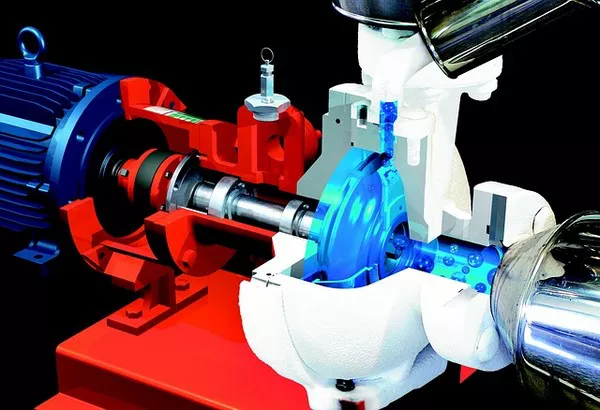Chemical fume hoods are essential safety devices in laboratories where hazardous chemicals are handled. They protect users by drawing hazardous fumes, vapors, and dust away from the breathing zone, thereby reducing exposure to toxic substances. Proper use of chemical fume hoods is crucial to ensure safety and maintain a healthy working environment. This article provides a detailed guide on how to use chemical fume hoods effectively.
Understanding Chemical Fume Hoods
Chemical fume hoods are ventilated enclosures with a movable front sash and an exhaust system that safely directs hazardous fumes outside the building. They come in various types, including:
Conventional Fume Hoods: These have a constant air volume and are the most common type.
Variable Air Volume (VAV) Fume Hoods: These adjust the air volume based on sash position, offering energy savings.
Ductless Fume Hoods: These use filters to remove contaminants and recirculate clean air back into the laboratory.
Perchloric Acid Fume Hoods: Specifically designed for use with perchloric acid to prevent explosive residues.
Preparing for Use
Before using a chemical fume hood, proper preparation is essential. Here are the steps to follow:
Training and Familiarization: Ensure you have received proper training on the use and limitations of the specific fume hood. Understand the manufacturer’s instructions and the laboratory’s safety protocols.
Inspection: Perform a visual inspection of the fume hood. Check for any signs of damage or malfunction, such as cracks in the sash or airflow indicator lights that indicate low airflow. Report any issues to your laboratory supervisor or safety officer.
Airflow Verification: Verify that the fume hood is functioning correctly. Most hoods have an airflow monitor or indicator. Ensure it reads within the safe operating range. You can also use a piece of tissue or a smoke test to visually confirm proper airflow direction.
Clear the Area: Remove any unnecessary equipment, chemicals, or clutter from the fume hood. This ensures unobstructed airflow and reduces the risk of accidents.
Personal Protective Equipment (PPE): Wear appropriate PPE, including lab coat, gloves, and safety goggles or face shield. Some procedures may require additional protection, such as respirators.
Using the Fume Hood
When using a chemical fume hood, follow these best practices to ensure safety and efficiency:
Sash Positioning: Adjust the sash to the appropriate height. The sash should be kept as low as possible to provide maximum protection. Typically, the recommended height is around 18 inches. Use the sash as a shield between you and the hazardous substances.
Work Placement: Place your work at least six inches inside the fume hood. This ensures that hazardous fumes are effectively captured and exhausted. Avoid placing large equipment or materials in a way that obstructs airflow.
Minimize Movements: Work calmly and avoid rapid movements, which can disrupt the airflow and reduce the fume hood’s effectiveness. Plan your work to minimize the time your hands are inside the hood.
Proper Techniques: Use appropriate techniques for handling chemicals. For example, when pouring liquids, pour gently to minimize splashes and aerosol generation. Use mechanical pipettes instead of mouth pipetting.
Equipment Placement: Arrange equipment and materials in a manner that promotes smooth airflow. Keep large items away from the back of the hood, and avoid placing items directly in front of the sash opening.
Continuous Monitoring: Keep an eye on the airflow monitor or indicator. If the airflow drops below the safe range, stop your work immediately and notify your supervisor.
Maintenance and Safety
Regular maintenance and adherence to safety protocols are crucial for the optimal performance of chemical fume hoods. Here are some key points to consider:
Routine Inspections: Conduct routine inspections of the fume hood and its components. Check for any signs of wear, damage, or malfunction. Report any issues to the appropriate personnel.
Filter Replacement: If using a ductless fume hood, ensure filters are replaced regularly according to the manufacturer’s recommendations. Proper filter maintenance is essential for effective contaminant removal.
Cleaning: Keep the fume hood clean and free of chemical residues. Regularly clean the sash, interior surfaces, and work area using appropriate cleaning agents. Avoid using solvents or chemicals that could damage the fume hood materials.
Emergency Procedures: Familiarize yourself with the laboratory’s emergency procedures. Know the location of emergency showers, eyewash stations, and spill kits. In case of a spill or emergency, follow the established protocols.
Waste Disposal: Dispose of chemical waste according to your laboratory’s waste disposal guidelines. Do not leave hazardous waste inside the fume hood.
Training and Updates: Stay updated with the latest safety guidelines and training programs. Regularly review and refresh your knowledge of fume hood operation and safety protocols.
Common Mistakes to Avoid
Even experienced users can make mistakes when using chemical fume hoods. Here are some common errors to avoid:
Overloading the Fume Hood: Placing too many items inside the fume hood can obstruct airflow and reduce its effectiveness. Keep the hood as clear as possible.
Ignoring Airflow Indicators: Failing to monitor the airflow indicators can lead to unsafe working conditions. Always pay attention to these indicators and take corrective action if needed.
Improper Sash Positioning: Keeping the sash too high reduces protection and increases exposure to hazardous substances. Always maintain the recommended sash height.
Not Using PPE: Skipping PPE can lead to serious injuries or exposure to hazardous chemicals. Always wear the appropriate protective gear.
Relying Solely on the Fume Hood: While fume hoods provide significant protection, they are not a substitute for good laboratory practices. Always follow safe handling procedures and use additional protective measures as needed.
See Also HVAC REFRIGERATION SYSTEMS: COMPONENTS & FUNCTIONALITY
Conclusion
Chemical fume hoods are vital tools for ensuring safety in laboratories where hazardous chemicals are used. Proper use, maintenance, and adherence to safety protocols are essential to maximize their effectiveness. By following the guidelines outlined in this article, you can ensure a safe and efficient working environment, protecting yourself and your colleagues from potential hazards. Regular training, vigilance, and a commitment to safety will go a long way in maintaining a healthy and productive laboratory environment.

